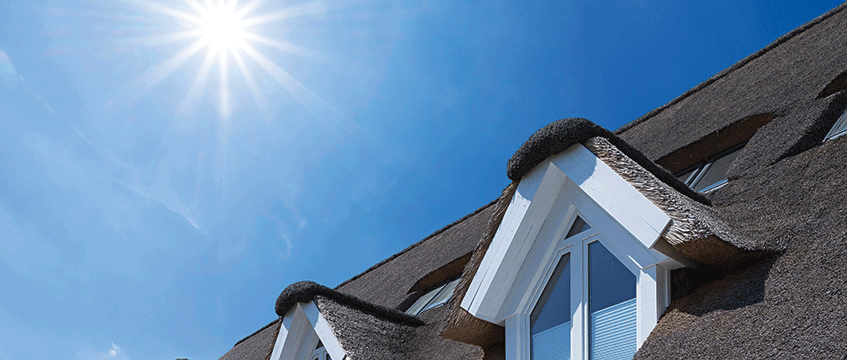Planning laws have become more relaxed in recent years, encouraging rooftop developments on blocks of residential flats. However, planning is far from the only legal issue to be considered where those existing flats are let on long leases.
Ownership of the roof
First, where any part of the existing block has been demised pursuant to a lease, the developer will need to determine who owns the roof. In doing so, the starting point will be the terms of the leases granted and, in particular, the parcels clauses, which set out what has been demised to the tenants.
The meaning of such clauses depends on the language used, interpreted having regard not only to the background knowledge, which would reasonably have been available to the parties when the lease was granted, but also to the context provided by the whole lease.
Even if, as a matter of construction of the leases, the roof is not demised to one or more tenants, where there is a roof void which can be accessed and used (for example for storage) by the tenants, there is a risk that an interest in that void may have been acquired by way of encroachment. Encroachment is a form of adverse possession, which requires, as established by case law, factual possession of land, with the necessary intention to possess and without the owner’s consent.
Where the tenant encroaches on adjoining land of the landlord, for example a roof void, and has occupied it for more than 12 years prior to the coming into force of the Land Registration Act 2002 on 13 October 2003, the landlord will not be entitled to recover possession of the roof void during the continuance of the lease and the tenant will be entitled to be registered as the leasehold owner of it.
The new regime, introduced by the 2002 Act and set out in Schedule 6, makes it more likely that a landlord will be able to prevent an application for such registration if it is based on any period of adverse possession falling after 13 October 2003. However, the risk has not been eliminated entirely.
Other conflicting rights
Even if the roof is owned by the landlord, the tenants may nonetheless have rights over the roof or other parts of the building, which may be infringed by the proposed development. For example, there may be water tanks on the roof with pipes, through which the tenants have a right of passage of running water, or the creation of access to the new rooftop flats may infringe the tenants’ existing rights over the common parts.
Not every interference with such rights amounts in law to a disturbance: there must be a substantial interference with the enjoyment of them. However, it is not necessary that there should be a total destruction of a right for a cause of action to arise and a landlord is not entitled unilaterally to take away a right, for example a right of way, over an existing route by offering an alternative route.
Airspace and rights of first refusal
Even if tenants have no rights under their leases which may impede development, they will almost certainly have statutory rights, which cannot be ignored.
The Landlord and Tenant Act 1987 prohibits landlords from disposing of property interests without giving tenants a right of first refusal and the Leasehold Reform, Housing and Urban Development Act 1993 gives tenants the right to collectively enfranchise and acquire the freehold of the building containing their flats, along with appurtenant property and any leases of common parts, the acquisition of which is reasonably necessary for the proper management or maintenance of the building.
In Dartmouth Court Blackheath Ltd v Berisworth Ltd [2008] EWHC 350 (Ch); [2008] 2 EGLR 141, a case under the 1987 Act, it was held that the airspace above a building was part of the building or alternatively a “common part” within the meaning of that Act, being part of the exterior of the building. Consequently, the grant of a lease of such airspace for the purposes of development is likely to trigger a right of first refusal.
In Merie Bin Mahfouz Co (UK) Ltd v Barrie House (Freehold) Ltd [2014] UKUT 390 (LC); [2015] EGLR 22, the Upper Tribunal (Lands Chamber) concluded that, in the context of the 1993 Act, the airspace immediately above the roof of a building can be regarded as part of the building, and in LM Homes Ltd and others v Queen Court Freehold Co Ltd [2020] EWCA Civ 371; [2020] EGLR 18 the airspace was held to be a common part of the building within the meaning of the 1993 Act, the acquisition of which was reasonably necessary for the proper management or maintenance of the building.
While tenants may not be particularly interested in exercising their right of first refusal and paying for a development lease of property they have no desire to develop, acquiring the freehold may seem an attractive means of thwarting any proposed development. The risk to the developer is that it loses out, not only because it may not be fully compensated for the development value of its interest, but because it loses monies already expended in seeking to realise that value.
Moreover, the government has announced plans to reform the 1993 Act by, among other things, allowing tenants to take a restriction on development on enfranchisement, so as to avoid paying development value altogether – so watch this (air)space.
Ellodie Gibbons is a barrister at Tanfield Chambers











